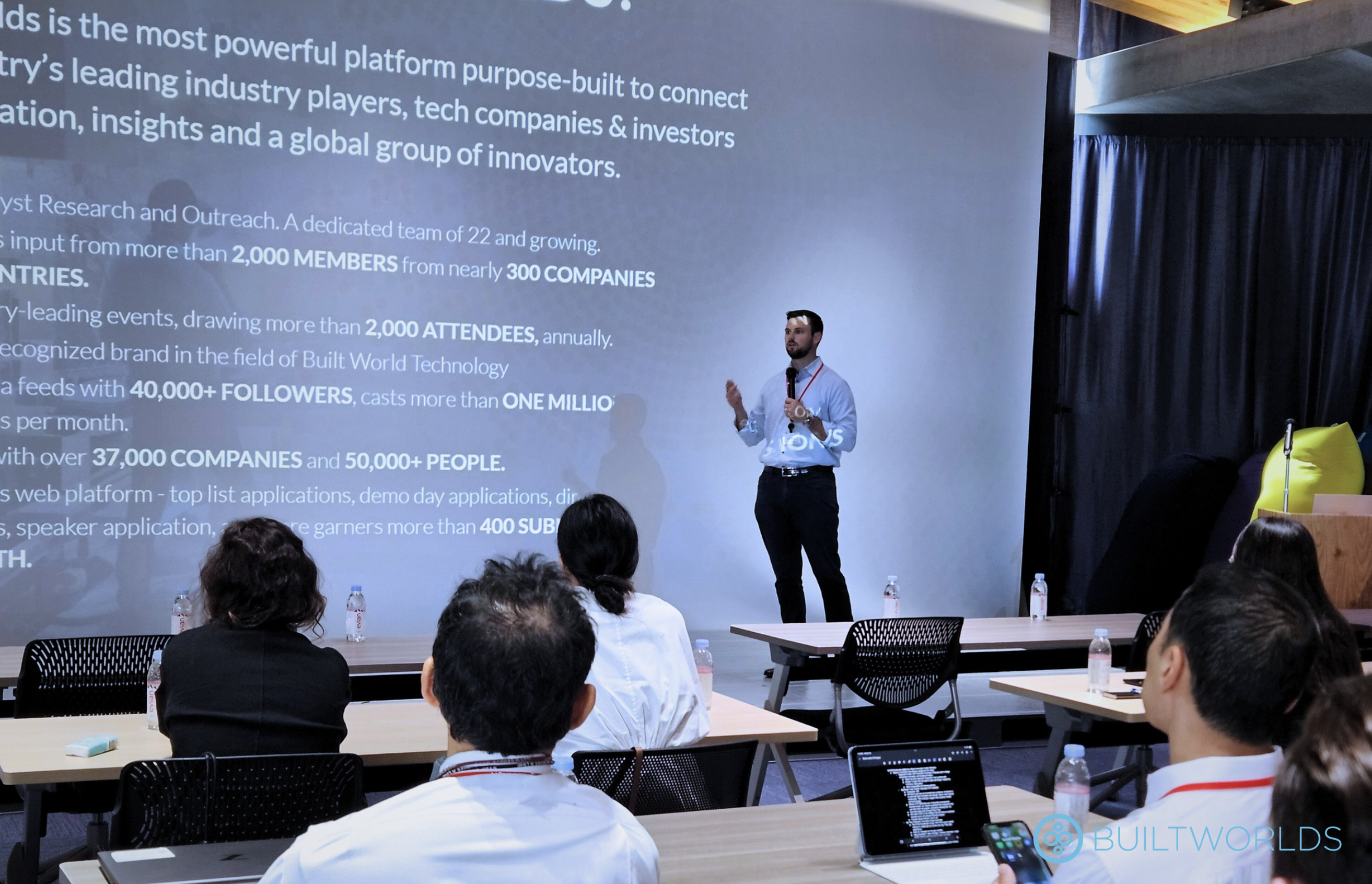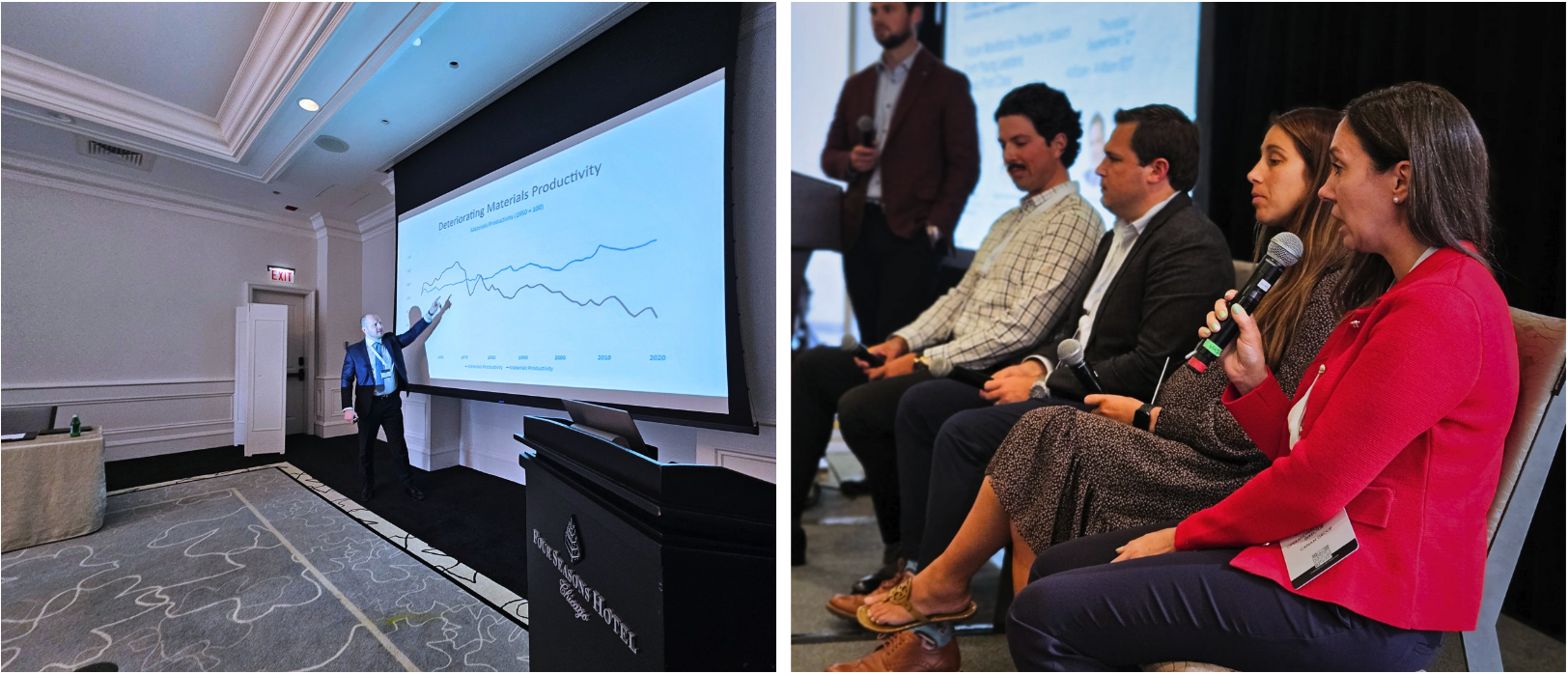
As a member of the BuiltWorlds research team, I have the opportunity to see a lot in the innovation space. BuiltWorlds has put out somewhere around 150 research reports this year alone, including investment diligence on early stage startups, benchmarking technology adoption across various industry stakeholders, and market reports on innovation trends in the industry. I’ve also had the opportunity to travel all over the world and learn from some of the foremost experts and pioneers in the industry. While I cannot begin to convey the breadth and depth of the information I have come across, a few particular discussions stick out to me from these events.
Lessons Learned From This Year’s BuiltWorlds Events
In Atlanta, I heard about the early uses cases for machine learning algorithms at IBM from John Tolva, currently CTO of Envra, and how the evolution of artificial intelligence may disrupt the industry even as we grasp what is actionable today. On top of that, we had an engaging conversation on the ethical dilemmas that we face as the use of AI technologies grows
In San Francisco, I learned about the history and evolution of venture capital in the construction industry from Darren Bechtel, the founder of Brick & Mortar Ventures. While every investor has their own thesis and angle, Darren’s track record of success, vision for the industry, and perspectives on various technologies continue to show a depth of knowledge of this industry and its direction rivaled by few in the world.
In Chicago, I was part of a contentious, if not somewhat controversial, discussion on the stagnation of productivity in the construction industry led by Chad Syverson, Professor of Economics at the University of Chicago. It is still difficult to fathom, but productivity in construction going back to the 1970’s has been stagnant if not declining, and no matter how you slice and dice the data, it is difficult to identify what the culprit is.

In Toronto, I had the opportunity to moderate a panel session which unpacked and discussed previous and current initiatives to grow and improve our industry workforce. As we continue to face an impending labor shortage all over the world, it is critical that we engage our future employees earlier in life, educate them on the opportunities the industry has to offer, and continue to train, train, and retrain our employees to support their goals in life.
In Tokyo, I was invited to learn, present, and tour Shimizu’s brand new innovation facility, NOVARE. Named after the latin “novare” which translates to “to innovate,” the facility is part of Shimizu’s broad effort to identify and develop innovative solutions to advance the business forward. Part of that effort is an extensive effort to develop and use AI solutions, some of this we learned through a fascinating presentation from Jean-Marc Frangos, an innovation consultant for Shimizu.
Lastly, In Boston, I learned extensively about growth stage investing and the M&A markets directly from some of the most active investors and buyers in the industry, including Erik Swennumson, Director of Corporate Development for Autodesk. While early-stage investing continues to make headlines in volume, both strategic investors in the space and private equity continue to see increasing opportunities to capitalize on the maturation and innovation advancements in the industry.
2024 Innovation Trends in the Buildings and Infrastructure Industries
Through our own research, other industry research I’ve come across, and the events I’ve been lucky enough to be a part of, I’ve come away impressed, intrigued, or thoughtful of a few particular trends and areas of innovation in the industry. A few in particular are worth noting.
Open innovation programs have massive impacts for their organizations
True open innovation programs are not just investors and are not just trying to adopt the next generation of technology solutions. The best-run programs are internal corporate disruptors that are constantly looking to turn the wheels faster, find new wheels, or break the wheels entirely. Through a combination of R&D efforts, external investments, technology adoption, and maybe a bit of magic, these small units within the walls of their massive organizations are both future-proofing and accelerating their organizations into the future. While these units can be a significant investment, good ones can also produce outsized returns.
The industry needs widespread automation, but we haven’t yet cracked the code
The industry saw significant strides in the use of robotics in 2024, but those strides barely scratch the surface of what is needed. The labor shortage we face around the world is only continuing to get worse, productivity is still stagnant (as far as we know), and all the while construction needs continue to grow. How fast and how well can we adapt to robotics solutions, and how well can the technology grow to more seamlessly fit into our existing workflows.
Separately, equipment OEM’s are continuing to invest massive resources into autonomous equipment solutions. The likes of Caterpillar, John Deere, Komatsu, Hitachi, Kubota, and others have been developing autonomous solutions for mining and agriculture for decades, and they are turning their focus increasingly to the jobsite. Remote control technologies also continue to support the evolution of these workflows. In addition to productivity gains, these improvements should also have significant impacts on safety and quality.
Reality capture tools are becoming industry standards for best-in-class builders
The ability to capture, store, and communicate data from the site to the office has moved from a “nice to have” to a “need to have” for many mature owners and builders. Reality capture and digital twin technologies which provide a single source of truth to all involved parties have seen continued growth and high stickiness once they are implemented. Verifying site conditions, tracking & reporting progress, and operating assets in one integrated platform are critical aspects of the tech stack for many projects. While this technology specialty area has seen some significant consolidation and “weeding out” of the rush of solutions since 2021, the increased adoption has only been more clear for the leaders in the space.
Later-stage/M&A activity continues to grow as the industry matures
The industry has seen over $30B of venture capital investments into construction technology solutions in the last decade, propelling the digitalization of the industry forward. This capital has led to the advancement of many technologies, the creation and shuttering of thousands of companies, and the continued growth of many existing companies. That capital, as well as the increased adoption of technology across the industry, has attracted growth investors, private equity, and strategic acquirers to the industry. There is increasingly fierce competition in the small and middle markets from private equity players. Meanwhile, the strategic players in the space, namely Nemetschek, Autodesk, Bentley, and Procore, all continue to opportunistically add to their growing platforms.

Discussion
Be the first to leave a comment.
You must be a member of the BuiltWorlds community to join the discussion.